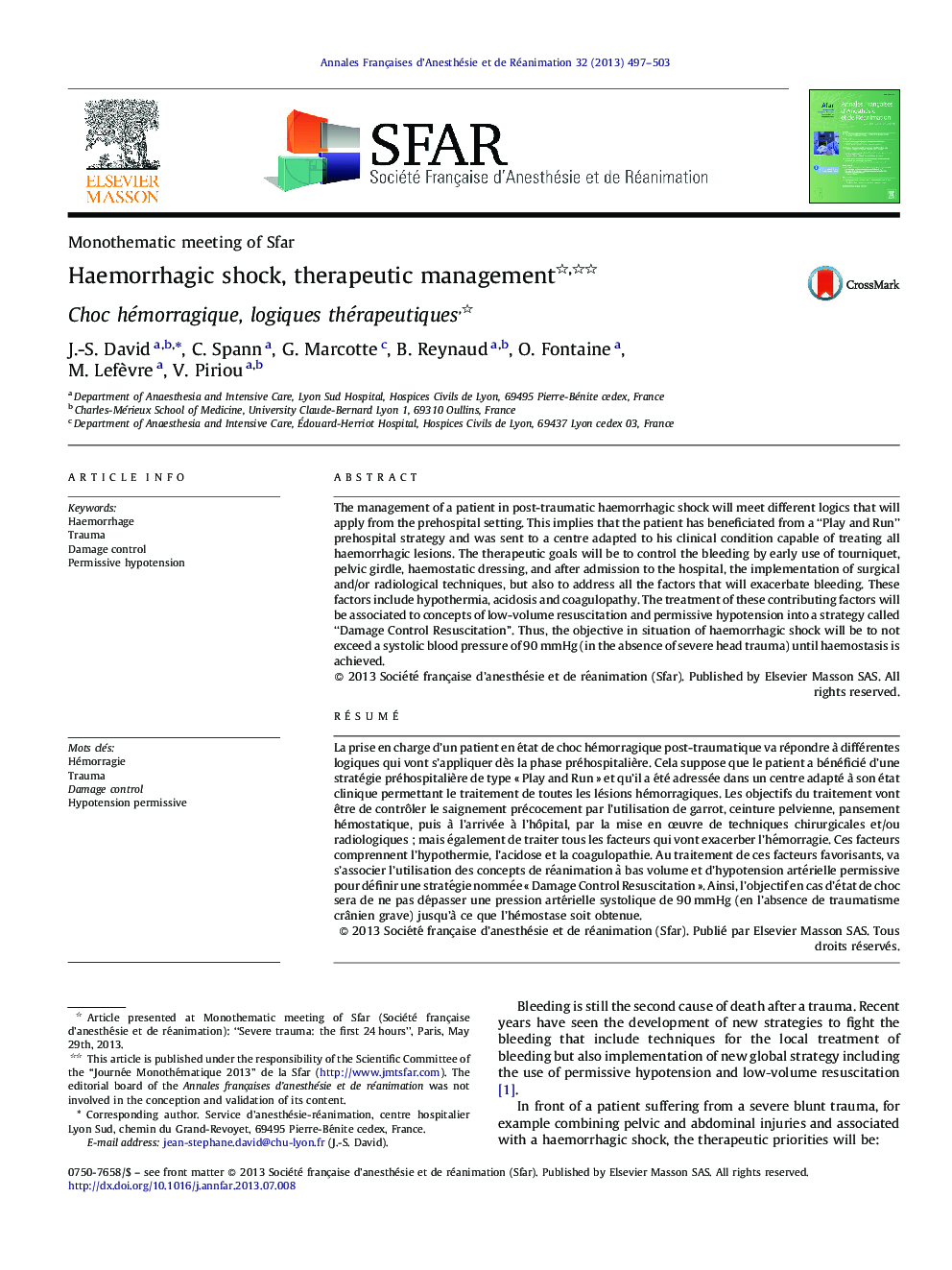| کد مقاله | کد نشریه | سال انتشار | مقاله انگلیسی | نسخه تمام متن |
|---|---|---|---|---|
| 2745711 | 1567180 | 2013 | 7 صفحه PDF | دانلود رایگان |

The management of a patient in post-traumatic haemorrhagic shock will meet different logics that will apply from the prehospital setting. This implies that the patient has beneficiated from a “Play and Run” prehospital strategy and was sent to a centre adapted to his clinical condition capable of treating all haemorrhagic lesions. The therapeutic goals will be to control the bleeding by early use of tourniquet, pelvic girdle, haemostatic dressing, and after admission to the hospital, the implementation of surgical and/or radiological techniques, but also to address all the factors that will exacerbate bleeding. These factors include hypothermia, acidosis and coagulopathy. The treatment of these contributing factors will be associated to concepts of low-volume resuscitation and permissive hypotension into a strategy called “Damage Control Resuscitation”. Thus, the objective in situation of haemorrhagic shock will be to not exceed a systolic blood pressure of 90 mmHg (in the absence of severe head trauma) until haemostasis is achieved.
RésuméLa prise en charge d’un patient en état de choc hémorragique post-traumatique va répondre à différentes logiques qui vont s’appliquer dès la phase préhospitalière. Cela suppose que le patient a bénéficié d’une stratégie préhospitalière de type « Play and Run » et qu’il a été adressée dans un centre adapté à son état clinique permettant le traitement de toutes les lésions hémorragiques. Les objectifs du traitement vont être de contrôler le saignement précocement par l’utilisation de garrot, ceinture pelvienne, pansement hémostatique, puis à l’arrivée à l’hôpital, par la mise en œuvre de techniques chirurgicales et/ou radiologiques ; mais également de traiter tous les facteurs qui vont exacerber l’hémorragie. Ces facteurs comprennent l’hypothermie, l’acidose et la coagulopathie. Au traitement de ces facteurs favorisants, va s’associer l’utilisation des concepts de réanimation à bas volume et d’hypotension artérielle permissive pour définir une stratégie nommée « Damage Control Resuscitation ». Ainsi, l’objectif en cas d’état de choc sera de ne pas dépasser une pression artérielle systolique de 90 mmHg (en l’absence de traumatisme crânien grave) jusqu’à ce que l’hémostase soit obtenue.
Journal: Annales Françaises d'Anesthésie et de Réanimation - Volume 32, Issues 7–8, July–August 2013, Pages 497–503